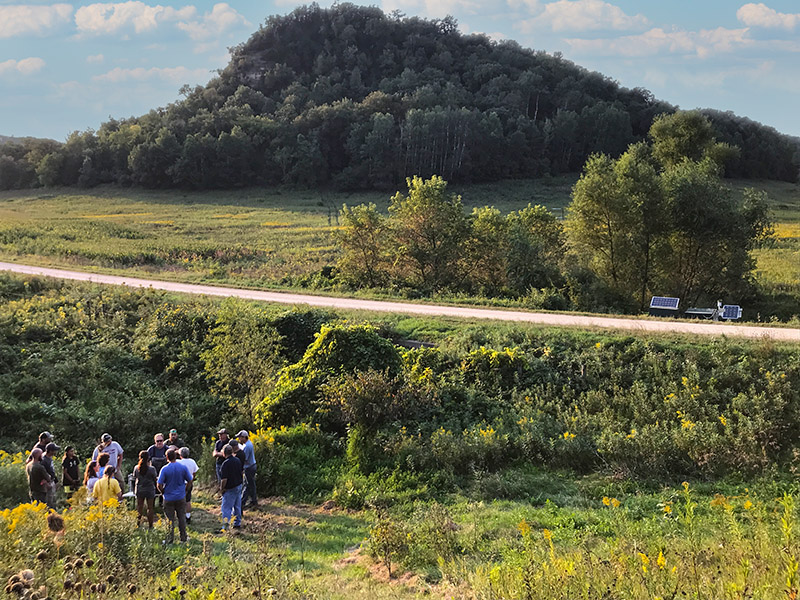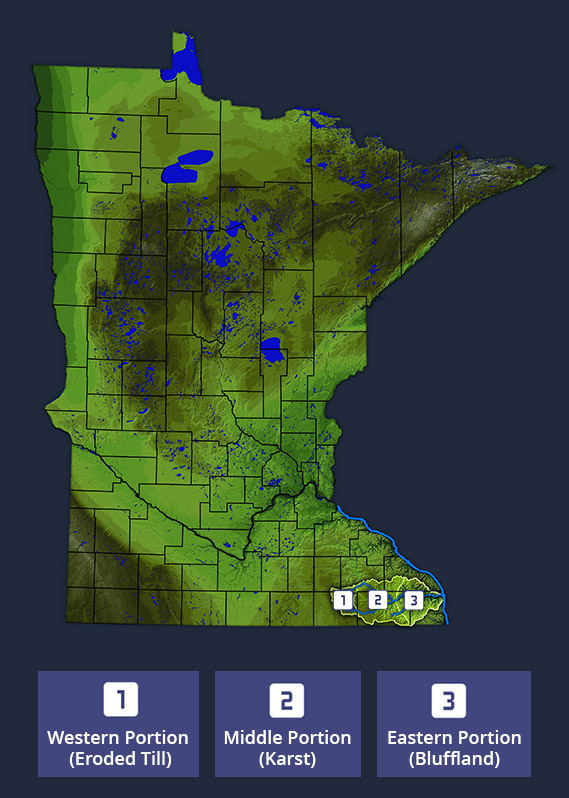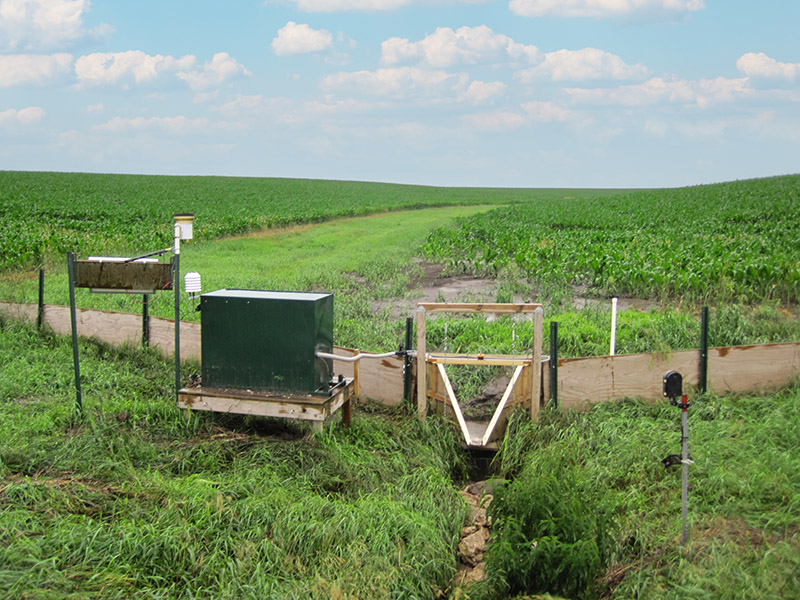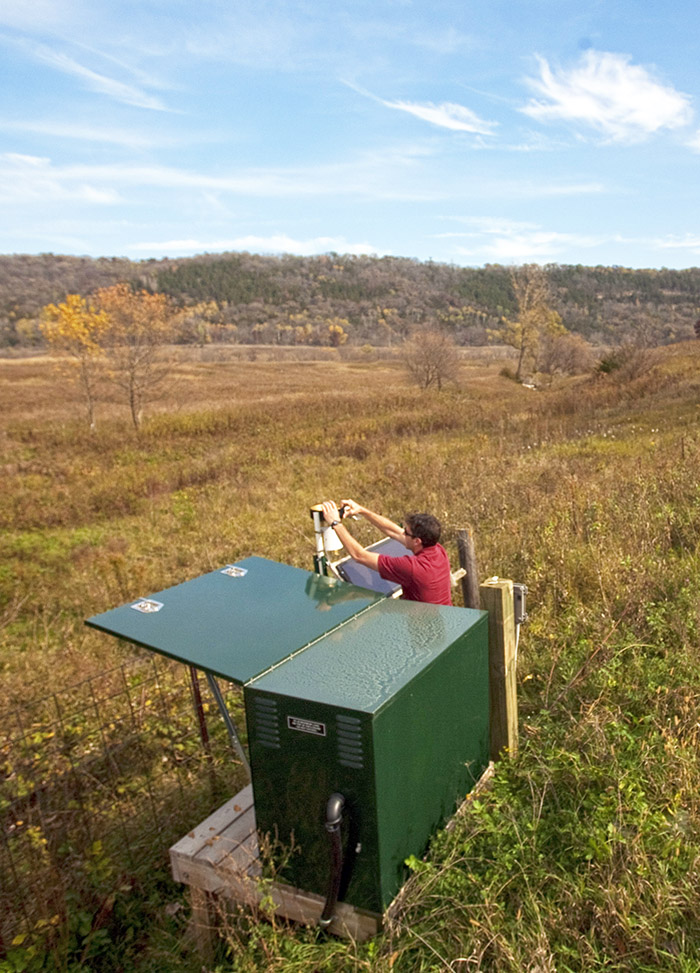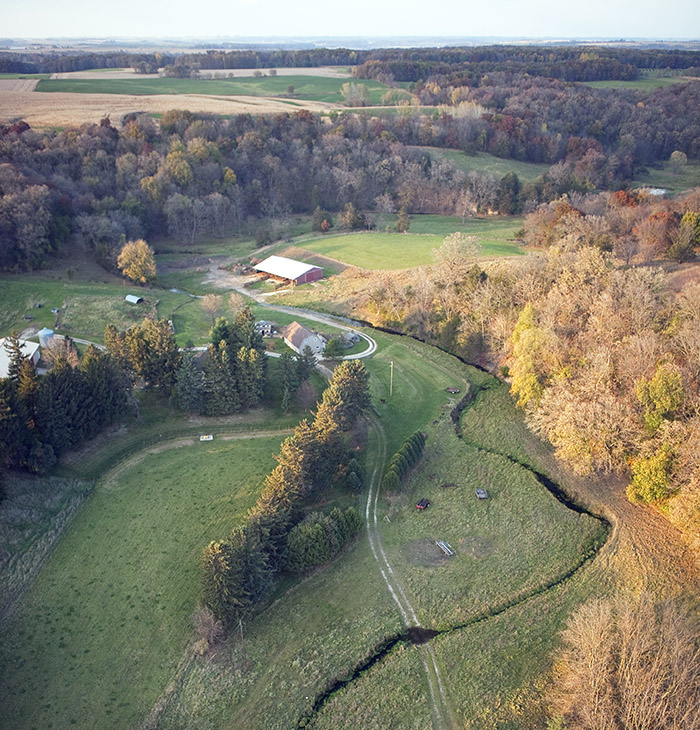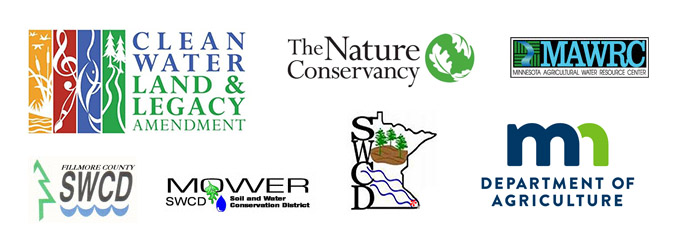Established in 2009, the Root River Field to Stream Partnership (RRFSP) emerged from the collaborative efforts of diverse organizations united by a common goal. Nestled in the picturesque landscapes of southeast Minnesota, RRFSP stands as an exceptional water monitoring endeavor and is recognized as one of the longest continuous running field to stream monitoring efforts in the United States. This partnership intertwines meticulous data collection at multiple scales, strong interpersonal connections, and real conservation actions. The wealth of knowledge collected as part of this project serves as an important resource for Southeast Minnesota’s farmers, crop advisors, researchers and soil and water conservation experts.
Where is this Project Located?
You’ll discover the Root River Watershed in the heart of southeastern Minnesota. Spanning a vast expanse of approximately 1 million acres, this region features a wide variety of diverse landscapes. Our project extends its reach across these diverse terrains, installing both edge-of-field and in-stream monitoring stations to capture the essence of each of these 3 landscapes:
Out of over 60 sub-watersheds in the Root River Watershed, three were randomly selected for this special study. The three sub-watersheds are the South Branch of the Root River Headwaters, Crystal Creek, and Bridge Creek.
How is Data Gathered?
We have strategically positioned ten monitoring stations in the project area:
Real time monitoring data is available at all stations online, including rainfall, water levels, water temperature, turbidity (water clarity), nitrate levels, and soil moisture and temperature.
Why Is This Monitoring Important?
All science-based projects start with a set of clear questions and this long-term project is about helping answer the following questions:
Analyzing and interpreting water quality information from watersheds like the Root is complex and challenging. Similar to studying individual trees to understand a forest, these small watersheds are helping answer big questions in the Root River Watershed. By using various methods and tools and at various scales, we’re able to better understand complex environmental processes. This approach, based on time-tested science, helps us better understand how the larger system works.
One of the primary goals of this project is to measure how much soil and nutrients are lost in runoff from farm fields and small watersheds. There are times when the risk for contaminant loss to streams and groundwater is the highest. Recognizing and understanding these high-risk time periods is important for farmers to help manage loss.
This project is also evaluating how new and existing practices used by farmers are helping to improve water quality. For instance, at one field in Mower County, our project is measuring how the installation of a prairie strip at the field edge and adjusting nitrogen fertilizer rate and timing practices that closely match crop needs will help enhance economic and environmental performance for the farmer.
Spotlight Video: How Groundwater Moves in Southeast Minnesota
The flow of groundwater in Minnesota’s Root River Watershed is fascinating and complex. The video above is part 1 of a video series about the geologic connections between groundwater and surface water. By understanding how groundwater moves differently within the glacial till, karst, and bluffland karst landscapes, you can begin to understand how nitrate-nitrogen, a commonly detected contaminant in groundwater, moves throughout southeast Minnesota.
Contact Us
We’re happy to answer questions you may have about The Root River Field to Stream Partnership. Whether you’re a farmer, crop advisor or a professional in conservation, our team is here to assist you. For more information, please contact:
Kevin Kuehner
Minnesota Department of Agriculture
kevin.kuehner@state.mn.us
James Fett and Jessica Bulman
Mower Soil and Water Conservation District
james@mowerdistrict.org
Aaren Mathison and Nikki Wheeler
Fillmore Soil and Water Conservation District
aaren.mathison@fillmoreswcd.org
nikki.wheeler@fillmoreswcd.org
Dan Wermanger
Root River SWCD
danowermager@gmail.com


